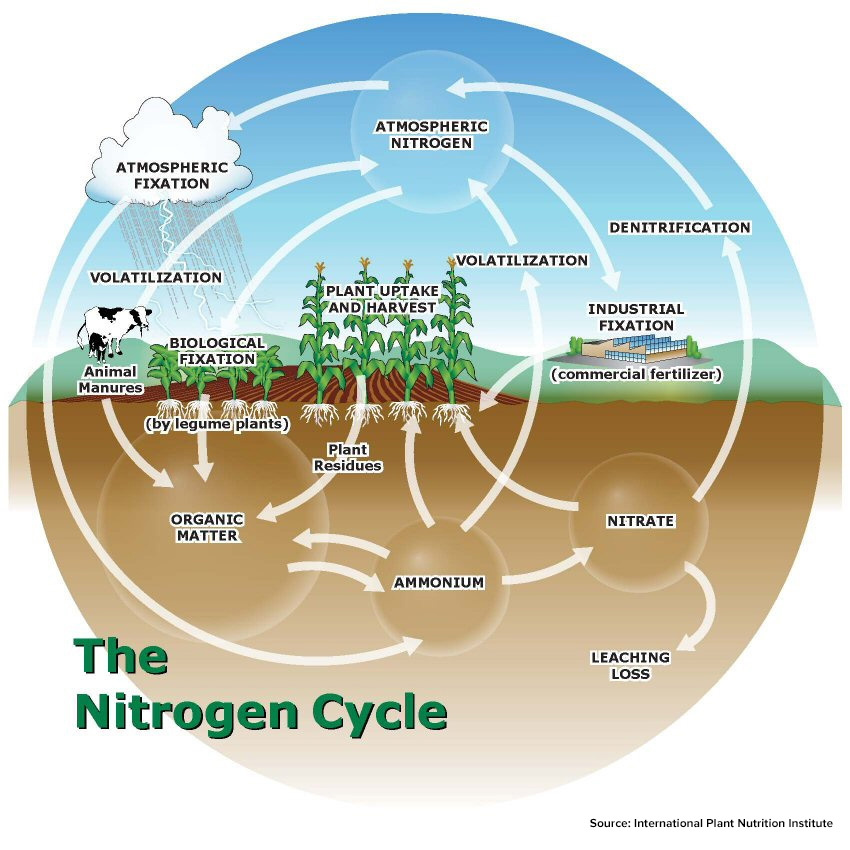
Nitrogen losses or tie-up can happen in many forms:
- Gassing off through volatilization and or denitrification
- Locked in clays or organic matter
- Leaching or runoff
- Lost in sandy or waterlogged soils and high pH soil
Nitrogen loss mechanisms in the soil make it harder for plants to access it. Microbes can degrade the nitrogen at different parts of the nitrogen cycle making it unavailable in chemical form or it can become tied up in the soil. Some of these microbes can be interrupted, minimizing loss mechanisms, by applying fertilizer coatings. The resulting fertilizer products are called Enhanced Efficiency Fertilizers. Today’s market is characterized by some of the highest nitrogen prices in history, making it even more important to reduce nitrogen losses and keep the money that is spent on the field, in the field.
There are three types of nitrogen-specific inhibitors: polymer-coated or slow-release urea, urease inhibitors, and nitrification inhibitors. Polymer-coated urea – or ESN – has a physical barrier stopping the microbes from digesting the nitrogen. It is encapsulated in a slow-release coating. A nitrification inhibitor is used in high moisture areas with sand, clay, or waterlogged soils, and can reduce losses for three to four weeks after application. It stops soil microbes from changing ammonium into nitrite, accelerating it through a gaseous chemical equation where the nitrogen is lost to the atmosphere.

Where broadcasting urea on dry land, shallow banding, or with sandy or high pH soil, there is a high risk for volatilization. A urease inhibitor is key; Agrotain is an example of a urease inhibitor that can work for 10-14 days after application. This fertilizer coating prevents microbes from breaking apart the urea and changing it into ammonia which can gas off.
When fall broadcasting urea without incorporation, there can be as much as a 30% loss of nitrogen through volatilization and denitrification. These are losses that are not visible to the eye but occur nonetheless. At the price of urea today, keeping 30% more nitrogen is key in retaining that investment on the farm. Using the right nitrogen source that prevents losses is just as important as putting it down in the most economical way. The principles of the 4Rs – Right Time, Right Source, Right Rate, and Right Place – help make these goals achievable.
Contact your Richardson Pioneer Ag Business Centre to discuss your best options to reduce nitrogen loss.
